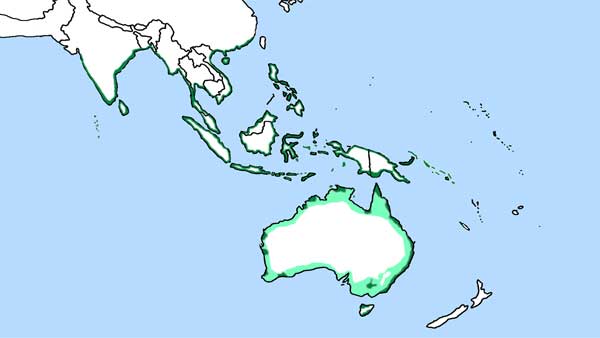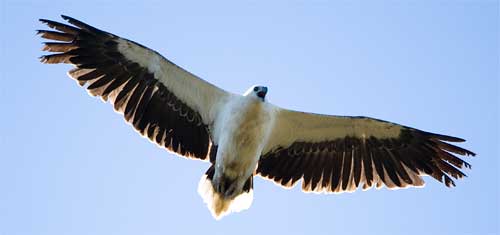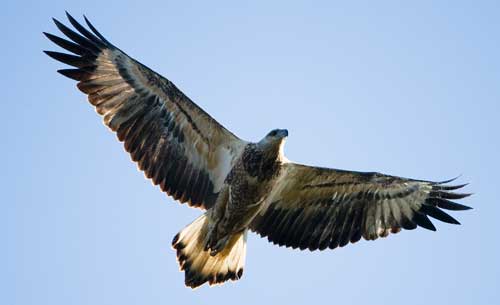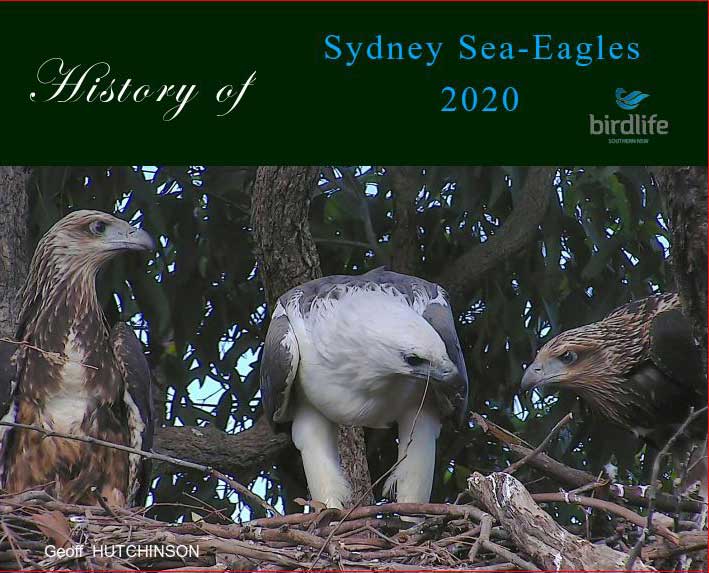White-bellied Sea-Eagle
In Australia the habitat of the White-bellied Sea-Eagle (WBSE) includes many coastal locations, as far south as Tasmania, and into many inland river systems. Elsewhere they can be found from India, east through to southern China, South-East Asia, the Philippines and Papua New Guinea. There are an estimated 10,000 WBSEs globally including an estimated 2,500 adult pairs. Of that population, 10-20% is located in Australia, where there are up to 500 breeding pairs.

The WBSE is the second largest raptor found in Australia, with long, broad wings and a short, wedge-shaped tail. They can measure up to 85 cm long with a wingspan between 1.8 and 2.2 metres (5'8" and 7'2"). An adult female WBSE weighs between 2.8 and 4.2 kgs (6.17lb and 9.25lb). The WBSE is an opportunistic hunter, typically eating a diet of fish, gulls and other birds and reptiles (for example, snakes and blue-tongue lizard).

Adult plumage is comprised of a white head, belly, breast, under-wing coverts and tail. The upper parts are grey and the wings have black tips. The bill is bluish-grey with a darker shaded tip. Vocalisation is best described as “goose-like” honking, with the male WBSE higher pitched and faster than the female.
Juvenile plumage consists of light brown head and light brown belly and breast. The under-wing coverts are best described as a mixture of ginger, white and dark brown. The tail is white with dark tips (which are only present in first year). Upper parts are predominantly dark brown. Transition to adult plumage is achieved via a number of moults with the underside gradually fading to white and the upper dark brown feathers replaced with grey.

Nests are generally large, stick structures with a nest bowl (or depression) in the middle; locations are likely to be in tall trees, rocky outcrops and occasionally ground level in some remote areas. They are also likely to be in a prominent position with an authoritative view of the surrounding area and near a river, bay, ocean or lake (up to 1km).
Breeding season extends from June to January (sometimes later in southern states). Clutches usually consist of two off-white eggs, laid two to three days apart. There are some rare instances of three egg clutches. Incubation commences after the first egg is laid and while both sexes incubate during the day, only the female will incubate at night. It takes approximately six weeks until the first hatch. Both parents will brood and feed the chicks, however the female is the primary care giver while the male hunts and guards the nesting area. As the nesting period progresses both parents gradually spend longer periods away from the nest, returning with food. Night brooding will cease between three and four weeks with parents remaining close-by. Chicks will likely fledge at around 65-70 days but will often remain in the area for several months being fed by the adults.

